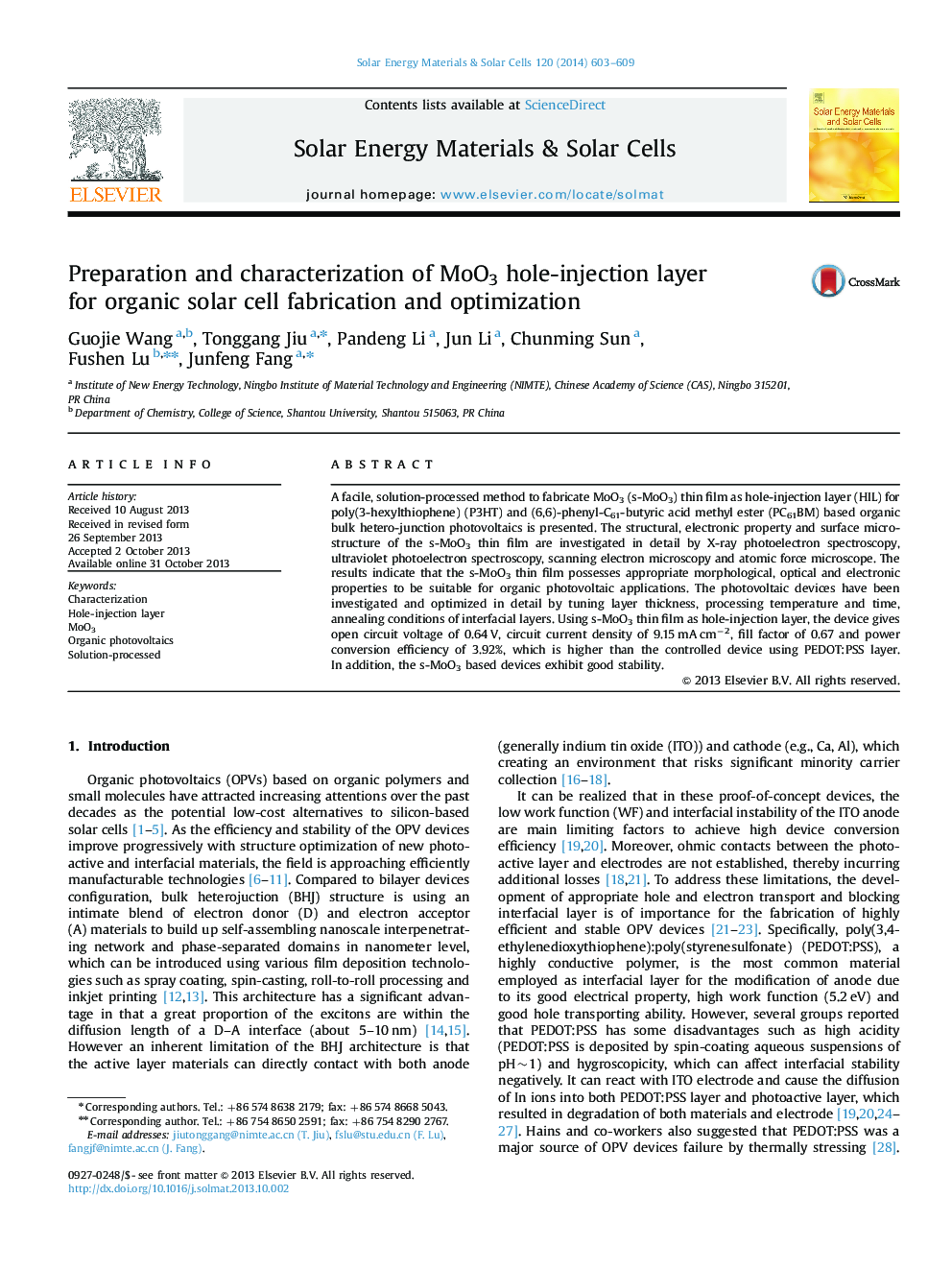| Article ID | Journal | Published Year | Pages | File Type |
|---|---|---|---|---|
| 78173 | Solar Energy Materials and Solar Cells | 2014 | 7 Pages |
•We have developed a simple solution-based method to prepare MoO3 thin film.•The method avoided the disadvantages in the literature such as using acidic precursor, oxygen sensitive materials and complex surface post-treatment.•We investigated in detail the compositional structure, energy level property, surface microstructure and electrical property of s-MoO3 thin film.•The s-MoO3 film possessed superior properties for use as interfacial layer in organic photovoltaic.•Various influencing factors on device performance were tested.
A facile, solution-processed method to fabricate MoO3 (s-MoO3) thin film as hole-injection layer (HIL) for poly(3-hexylthiophene) (P3HT) and (6,6)-phenyl-C61-butyric acid methyl ester (PC61BM) based organic bulk hetero-junction photovoltaics is presented. The structural, electronic property and surface microstructure of the s-MoO3 thin film are investigated in detail by X-ray photoelectron spectroscopy, ultraviolet photoelectron spectroscopy, scanning electron microscopy and atomic force microscope. The results indicate that the s-MoO3 thin film possesses appropriate morphological, optical and electronic properties to be suitable for organic photovoltaic applications. The photovoltaic devices have been investigated and optimized in detail by tuning layer thickness, processing temperature and time, annealing conditions of interfacial layers. Using s-MoO3 thin film as hole-injection layer, the device gives open circuit voltage of 0.64 V, circuit current density of 9.15 mA cm−2, fill factor of 0.67 and power conversion efficiency of 3.92%, which is higher than the controlled device using PEDOT:PSS layer. In addition, the s-MoO3 based devices exhibit good stability.
Graphical abstractA simple solution-based method to prepare MoO3 thin film was developed and the electronic property and microstructure of the thin film were characterized in detail. Organic photovoltaic model devices with this MoO3 thin film as hole injection layer were also fabricated and the results showed the enhanced performance and better stability than conventionally used hole injection layer.Figure optionsDownload full-size imageDownload as PowerPoint slide
